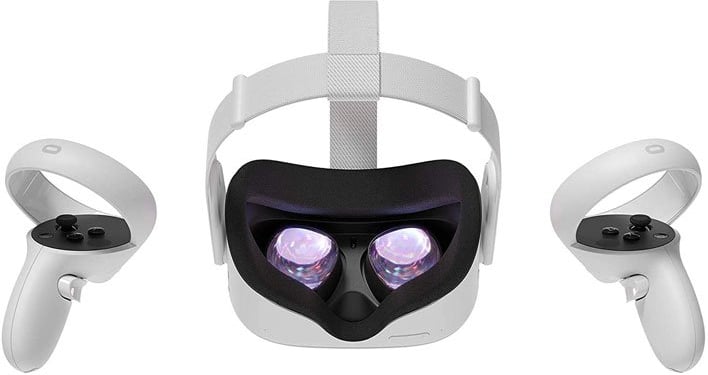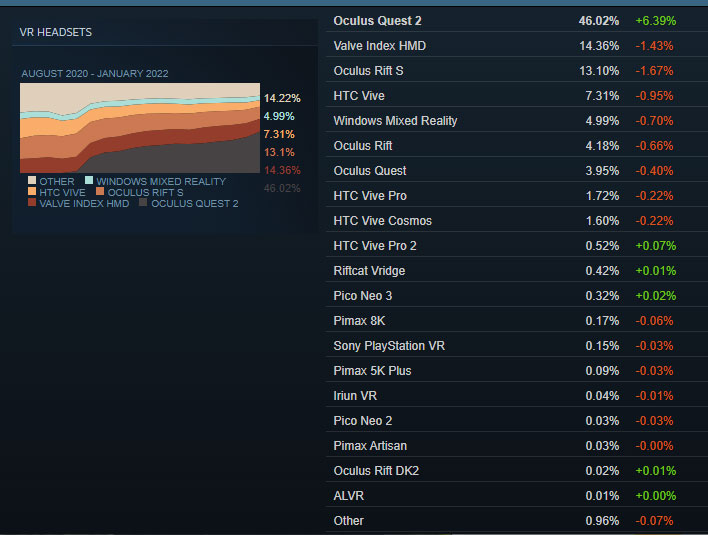Meta Quest 2 Is The Hottest VR Headset On Steam And May Get A Body Tracking Upgrade

Meta, parent company of Facebook, was recently found to have filed a patent that would track a user's body language and eye movement in an attempt to individually target ads. The patents include illustrations of a highly realistic virtual reality experience that is filled with human-like avatars that tracks the user's facial and body movements through varied wearable equipment. Add to that, someone found a new option in the Quest 2 developer documentation that seems to hint at an unannounced "Body Tracking Support" option.
The option was found by UploadVR and was (past tense) located in the Unity development resources, as it has since been removed by Meta. While it is unclear as to how body tracking could be implemented with the current Quest 2 headset, it could be an indication of things to come with future upgrades to the existing hardware, or new versions of the popular VR headset. Currently the Quest 2 is the most used VR headset on Steam.
As it stands now, the Quest 2 is limited to tracking the user's head and hands, including fingers. It is possible Meta has plans to add arms, torso, or even legs in future updates. However, it is probably more likely to be included in Meta's Project Cambria, which is slated to debut later this year. It is intended to be a higher end product that will include more sensors for eye and face tracking.
Another possibility for using body tracking is through Portal. Portal is part of Meta's Reality Labs division, and is a line of video calling technology that competes with the likes of Amazon Echo and Google Nest. Portal utilizes a high resolution wide angle camera and could be used for body tracking. It can already track head movement, but it is unclear whether or not the processors are powerful enough to track multiple body parts at the same time. This is probably the least likely option, however.
Regardless of what is to come of any possible body tracking features, the Quest 2 is doing very well. It currently accounts for nearly half of all the VR headsets being used on the Steam platform (46.2%). Perhaps more will be revealed in relation to body tracking features in regard to the upcoming Project Cambria VR headset as it nears launch. Until then, we can only speculate how Meta intends to use body tracking in the metaverse.


